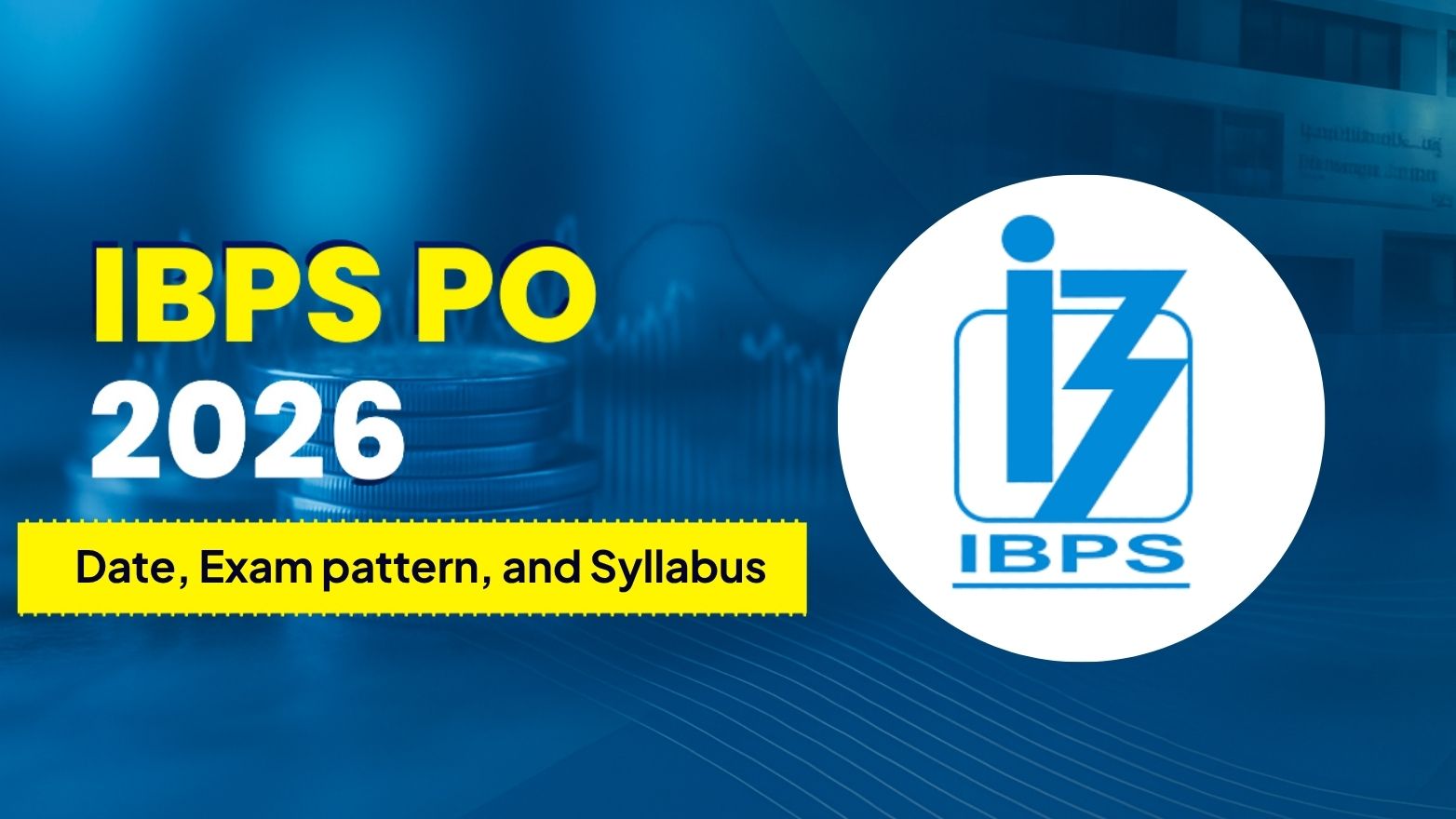Blogs / Student's Corner / JEE Main 2025 Syllabus & Last Years’ Question Papers
Blogs / Student's Corner / JEE Main 2025 Syllabus & Last Years’ Question Papers

Primebook Team
21 Oct 2024

JEE Main 2025 Syllabus & Last Years’ Question Papers
Are you looking forward to appearing in JEE Main 2025 and aiming to pursue a holistic preparation starting today? You have landed in the right place! This blog covers the tentative JEE Main 2025 syllabus and the last 5 years question papers to follow and prepare for your upcoming career endeavour in engineering.
JEE Main 2025 Syllabus
The JEE Main syllabus consists of three subjects: Physics, Chemistry, and Mathematics. Here’s a detailed subject-wise syllabus breakdown for you to study comprehensively.
JEE Main Physics Syllabus
Unit 1. Physics & Measurement
— Physics, Technology, and Society
— Systems of Units - SI Units, Fundamental Units, & Derived Units
— Least Count, Accuracy and Precision of Measuring Instruments
— Errors in Measurement
— Dimensions of Physical Quantities
— Dimensional Analysis and Its Applications
Unit 2. Kinematics
— Motion in a Straight Line
— Position-Time Graph and Velocity-Time Graph
— Speed and Velocity: Uniform & Non-uniform Motion
— Average Speed and Instantaneous Velocity
— Uniformly Accelerated Motion
— Scalars & Vectors; Scalar & Vector Product
— Unit Vector and Resolution of a Vector
— Vector Addition & Subtraction
— Relative Velocity
— Motion in a Plane
— Projectile Motion
— Uniform Circular Motion
Unit 3. Laws of Motion
— Force & Inertia: Newton’s First Law of Motion
— Momentum: Newton’s Second Law of Motion
— Impulses: Newton’s Third Law of Motion
— Linear Momentum’s Law of Conservation & Its Applications
— Equilibrium of Concurrent Forces
— Static and Kinetic Friction
— Law of Friction, Rolling Friction
— Dynamics of Uniform Circular Motion
— Centripetal Force and Its Applications
Unit 4. Work, Energy, & Power
— Work Done by A Constant Force and A Variable Force
— Kinetic Energy & Potential Energy
— Work-Energy Theorem, Power
— The Potential Energy of Spring Conservation of Mechanical Energy
— Conservative & Non-Conservative Forces
— Motion in a Vertical Circle: Elastic & Inelastic Collisions in One or Two Dimensions
Unit 5. Rotational Motion
— Centre of the Mass of A Two-Particle System
— Centre of the Mass of A Rigid Body
— Basic Concepts of Rotational Motion
— Moment of A Force, Torque, & Angular Momentum
— Conservation of Angular Momentum & Its Applications
— The Moment of Inertia
— The Radius of Gyration
— Values of Moments of Inertia for Simple Geometrical Objects
— Parallel and Perpendicular Axes Theorems & Their Applications
— Equilibrium of Rigid Bodies
— Rigid Body Rotation & Equations of Rotational Motion
— Comparison of Linear & Rotational Motion
Unit 6. Gravitation
— The Universal Law of Gravitation
— Acceleration Due to Gravity & Its Variation with Altitude & Depth
— Kepler’s Law of Planetary Motion
— Gravitational Potential Energy
— Gravitational Potential
— Escape Velocity
— Orbital Velocity of A Satellite
— Geo Stationary Satellites
Unit 7. Properties of Solids and Liquids
— Elastic Behaviour
— Stress-Strain Relationship
— Hooke’s Law
— Young’s Modulus
— Bulk Modulus
— Modulus of Rigidity
— Pressure due to a Fluid Column
— Pascals’ Law and Its Applications
— Effect of Gravity on Fluid Pressure
— Viscosity
— Stokes’ Law
— Terminal Velocity
— Streamline and Turbulent Flow
— Reynolds Number
— Bernoulli’s Principle and Its Applications
— Surface Energy and Surface Tension
— Angle of Contact
— Application of Surface Tension: Drops, Bubbles, and Capillary Rise
— Heat, Temperature, Thermal Expansion
— Specific Heat Capacity
— Calorimetry
— Change of State, Latent Heat
— Heat Transfer: Conduction, Convection, Radiation
— Newton’s Law of Cooling
Unit 8. Thermodynamics
— Thermal Equilibrium
— Zeroth Law of Thermodynamics
— The Concept of Temperature
— Heat, Work, & Internal Energy
— The First Law of Thermodynamics: Isothermal and Adiabatic Processes
— The Second Law of Thermodynamics: Reversible and Irreversible Processes
— Carnot Engine & Its Efficiency
Unit 9. Kinetic Theory of Gases
— Equation of State of a Perfect Gas
— Work Done on Compressing a Gas
— Kinetic Theory of Gases - Assumptions
— The Concept of Pressure
— Kinetic Interpretation of Temperature: RMS Speed of Gas Molecules, Degrees of Freedom
— Law of Equipartition of Energy & Its Application to Specific Heat Capacities of Gases
— Mean Free Path
— Avogadro’s Number
Unit 10. Oscillation & Waves
— Periodic Motion - Period, Frequency, Displacement as A Function of Time
— Periodic Functions
— Simple Harmonic Motion (S.H.M) & Its Equation
— Phase: Oscillations of a Spring, Restoring Forces and Force Constant
— Energy in S.H.M - Kinetic and Potential Energies
— Simple Pendulum: Derivation of Expression for Its Time Period
— Wave Motion
— Longitudinal & Transverse Waves
— Speed of Travelling Wave
— Displacement Relation for A Progressive Wave
— Principle of Superposition of Waves
— Reflection of Waves
— Standing Waves in Strings & Organ Pipes; Fundamental Mode & Harmonics
— Beats
— Doppler’s Effect on Sound
Unit 11. Electrostatics
— Electric Charges: Conservation of Charges
— Coulomb’s Law Forces Between Two Point Charges
— Forces Between Multiple Charges: Superposition Principle & Continuous Charge Distribution
— Electric Field: Electric Field due to a Point Charge and Electric Field Lines
— Electric Dipole and Electric Field Due to a Dipole
— Torque on a Dipole in a Uniform Electric Field
— Electric Flux: Gauss's Law & Its Applications to Find Field due to Infinitely Long Uniformly Charged Straight Wire, Uniformly Charged Infinite Plane Sheet, and Uniformly Charged Thin Spherical Shell
— Electric Potential & Its Calculation for a Point Charge
— Electric Dipole and System of Charges: Potential Difference
— Equipotential Surfaces, Electrical Potential Energy of a System of Two Point Charges & Electric Dipole in an Electrostatic Field
— Conductors & Insulators: Dielectrics and Electric Polarization, Capacitors, The Combination of Capacitors in Series & Parallel, Capacitance of a Parallel Plate Capacitor with & without Dielectric Medium between the Plates
— Energy Stored in A Capacitor
Unit 12. Current Electricity
— Electric Current
— Drift Velocity
— Ohm’s Law
— Electrical Resistance
— Resistance of Different Materials
— V-l Characteristics of Ohmic and Non-Ohmic Conductors
— Electrical Energy & Power
— Electrical Resistivity
— Color Code for Resistors
— Series & Parallel Combinations of Resistors
— Temperature Dependence of Resistance
— Electric Cell & Internal Resistance
— Potential Difference & Emf of a Cell
— A Combination of Cells in Series & Parallel
— Kirchhoff's Laws & Their Applications
— Wheatstone Bridge
— Metre Bridge
— Potentiometer: Principle & Its Applications
Unit 13. Magnetic Effect of Current and Magnetism
— Biot - Savart Law & Its Application to Current Carrying Circular Loop
— Ampere's Law & Its Applications to Infinitely Long Current Carrying Straight Wire & Solenoid
— Force on a Moving Charge in Uniform Magnetic & Electric Fields
— Cyclotron
— Force on a Current-Carrying Conductor in a Uniform Magnetic Field
— The Force between Two Parallel Currents Carrying Conductors - Definition of Ampere
— Torque Experienced by a Current Loop in a Uniform Magnetic Field: Moving Coil Galvanometer, Its Sensitivity, & Conversion to Ammeter and Voltmeter
— Current Loop as a Magnetic Dipole & Its Magnetic Dipole Moment
— Bar Magnet As An Equivalent Solenoid
— Earth’s Magnetic Field & Magnetic Elements
— Para, Dia, & Ferromagnetic Substances
— Magnetic Susceptibility & Permeability
— Hysteresis
— Electromagnets & Permanent Magnets
Unit 14. Electromagnetic Induction & Alternating Currents
— Electromagnetic Induction: Faraday's Law
— Induced Emf & Current: Lenz's Law, Eddy Currents
— Self & Mutual Inductance
— Alternating Currents
— Peak & RMS Value of Alternating Current/ Voltage: Reactance & Impedance, LCR Series Circuit, Resonance, Power in AC Circuits, Wattless Current
— AC Generator & Transformer
Unit 15. Electromagnetic Waves
— Electromagnetic Waves and Their Characteristics
— Transverse Nature of Electromagnetic Waves
— Electromagnetic Spectrum (Radio Waves, Microwaves, Infrared, Visible, Ultraviolet, X-rays, Gamma Rays)
— Application of Electromagnetic Waves
Unit 16. Optics
— Reflection and Refraction of Light at Plane and Spherical Surfaces
— Mirror Formula
— Total Internal Reflection & Its Applications
— Deviation & Dispersion of Light by A Prism
— Lens Formula
— Magnification
— Power of A Lens
— Combination of Thin Lenses in Contact
— Microscope & Astronomical Telescope (Reflecting and Refracting) & Their Magnifying Powers
— Wave Optics: Wavefront and Huygens Principle
— Laws of Reflection & Refraction Using Huygens Principle
— Interference, Young's Double-Slit Experiment and Expression for Fringe Width, Coherent Sources, & Sustained Interference of Light
— Diffraction due to a Single Slit
— Width of Central Maximum
— Resolving Power of Microscope and Astronomical Telescope
— Polarisation, Plane-Polarized Light: Brewster's Law
— Uses of Plane-Polarized Light & Polaroid
Unit 17. Dual Nature of Matter & Radiation
— Dual Nature of Radiation
— Photoelectric Effect
— Hertz & Lenard's Observations
— Einstein's Photoelectric Equation: Particle Nature of Light
— Matter Waves-Wave Nature of Particle
— de Broglie Relation
Unit 18. Atoms & Nuclei
— Alpha-Particle Scattering Experiment
— Rutherford's Model of Atom
— Bohr Model, Energy Levels, Hydrogen Spectrum
— Composition and Size of Nucleus, Atomic Masses, Isotopes, Isobars, Isotones
— Radioactivity: Alpha, Beta & Gamma Particles/Rays and Their Properties
— Radioactive Decay Law
— Mass-Energy Relation & Mass Defect
— Binding Energy Per Nucleon and Its Variation with Mass Number
— Nuclear Fission & Fusion
Unit 19. Electronic Devices
— Semiconductors
— Semiconductor Diode: I-V Characteristics in Forward and Reverse Bias
— Diode as a Rectifier
— I-V Characteristics of LED
— The Photodiode
— Solar Cell
— Zener Diode
— Zener Diode as a Voltage Regulator
— Junction Transistor, Transistor Action, Characteristics - Transistor as An Amplifier (Common Emitter Configuration) and Oscillator
— Transistor as A Switch
— Logic Gates (OR. AND. NOT. NAND and NOR)
JEE Main Chemistry Syllabus: Physical Chemistry
Unit 1. Some Basic Concepts in Chemistry
— Matter & Its Nature
— Dalton's Atomic Theory Concept of Atom, Molecule, Element, & Compound; Physical Quantities & Their Measurement in Chemistry; Precision & Accuracy, Significant Figures
— S.I. Units
— Dimensional Analysis: Laws of Chemical Combination
— Atomic & Molecular Masses
— Mole Concept
— Molar Mass
— Percentage Composition
— Empirical and Molecular Formulae: Chemical Equations and Stoichiometry
Unit 2. Atomic Structure
— Thomson & Rutherford Atomic Models and Their Limitations
— Nature of Electromagnetic Radiation
— Photoelectric Effect
— Spectrum of The Hydrogen Atom
— Bohr Model of a Hydrogen Atom: Its Postulates, Derivation of The Relations for The Energy of The Electron & Radii of Different Orbits
— Limitations of Bohr's Model
— Dual Nature of Matter
— de Broglie's Relationship
— Heisenberg Uncertainty Principle
— Elementary Ideas of Quantum Mechanics
— Quantum Mechanics
— The Quantum Mechanical Model of An Atom & Its Important Features
— Concept of Atomic Orbitals as One-Electron Wave Functions: Variation of Y & Y2 with r for 1s & 2s Orbitals
— Various Quantum Numbers (Principal, Angular Momentum, and Magnetic Quantum Numbers) & Their Significance
— Shapes of s, p, & d - Orbitals
— Electron Spin & Spin Quantum Number: Rules for Filling Electrons in Orbitals - Aufbau Principle
— Pauli's Exclusion Principle & Hund's Rule
— Electronic Configuration of Elements
— Extra Stability of Half-Filled and Completely Filled Orbitals
Unit 3. Chemical Bonding & Molecular Structure
— Kossel - Lewis Approach to Chemical Bond Formation
— The Concept of Ionic & Covalent Bonds
— Ionic Bonding: Formation of Ionic Bonds, Factors Affecting The Formation of Ionic Bonds, & Calculation of Lattice Enthalpy
— Covalent Bonding: Concept of Electronegativity
— Fajan's Rule, Dipole Moment: Valence Shell Electron Pair Repulsion (VSEPR) Theory & Shapes of Simple Molecules
— Quantum Mechanical Approach to Covalent Bonding: Valence Bond Theory & Its Important Features
— The Concept of Hybridization Involving s, p, & d Orbitals, Resonance
— Molecular Orbital Theory: Its Important Features
— LCAOs
— Types of Molecular Orbitals (Bonding and Antibonding)
— Sigma & Pi Bonds
— Molecular Orbital Electronic Configurations of Homonuclear Diatomic Molecules
— The Concept of Bond Order, Bond Length, & Bond Energy
— Elementary Idea of Metallic Bonding
— Hydrogen Bonding & Its Applications
Unit 4. Chemical Thermodynamics
— Fundamentals of Thermodynamics: System and Surroundings, Extensive and Intensive Properties, State Functions, Types of Processes
— The First Law of Thermodynamics: Concept of Work, Heat Internal Energy and Enthalpy, Heat Capacity, Molar Heat Capacity, Hess’s Law of Constant Heat Summation, Enthalpies of Bond Dissociation, Combustion, Formation, Atomization, Sublimation, Phase Transition, Hydration, Ionization, & Solution
— The Second Law of Thermodynamics: Spontaneity of Processes, ΔS of The Universe and ΔC of The System as Criteria for Spontaneity; ΔG° (Standard Gibbs Energy Change) & Equilibrium Constant
Unit 5. Solutions
— Different Methods for Expressing The Concentration of Solution: Molality, Molarity, Mole Fraction, Percentage (By Volume & Mass Both)
— The Vapour Pressure of Solutions & Raoult's Law: Ideal & Non-Ideal Solutions
— Vapour Pressure - Composition & Plots for Ideal & Non-Ideal Solutions
— Colligative Properties of Dilute Solutions: A Relative Lowering of Vapour Pressure, Depression of Freezing Point, The Elevation of Boiling Point & Osmotic Pressure
— Determination of Molecular Mass using Colligative Properties
— Abnormal Value of Molar Mass, Van’t Hoff Factor & Its Significance
Unit 6. Equilibrium
— Meaning of Equilibrium
— The Concept of Equilibrium
— Equilibria Involving Physical Processes: Solid-Liquid, Liquid-Gas, and Solid-Gas Equilibria
— Henry's Law
— General Characteristics of Equilibrium Involving Physical Processes
— Equilibrium Involving Chemical Processes: Law of Chemical Equilibrium
— Equilibrium Constants (Kp and Kc) & Their Significance
— The Significance of ΔG & ΔG° in Chemical Equilibrium
— Factors Affecting Equilibrium Concentration, Pressure, and Temperature; The Effect of Catalyst
— Le Chatelier Principle
— Ionic Equilibrium: Weak & Strong Electrolytes, Ionization of Electrolytes
— Various Concepts of Acids & Bases (Arrhenius, Bronsted - Lowry and Lewis) and their Ionization
— Acid-base Equilibria (including Multistage Ionization) & Ionization Constants
— Ionisation of Water
— pH Scale & Common Ion Effect
— Hydrolysis of Salts & pH of Their Solutions
— The Solubility of Sparingly Soluble Salts & Solubility Products
— Buffer Solutions
Unit 7. Redox Reactions & Electrochemistry
— Electronic Concepts of Oxidation & Reduction
— Redox Reactions
— Oxidation Number and Rules for Assigning Oxidation Number
— Balancing of Redox Reactions
— Electrolytic & Metallic Conduction
— Conductance in Electrolytic Solutions
— Molar Conductivities & Their Variation with Concentration: Kohlrausch’s Law & Its Applications
— Electrochemical Cells: Electrolytic & Galvanic Cells
— Different Types of Electrodes
— Electrode Potentials (Including Standard Electrode Potential)
— Half Cells & Cell Reactions
— Emf of a Galvanic Cell & Its Measurement: Nernst Equation & Its Applications
— Relationship Between Cell Potential & Gibbs’ Energy Change: Dry Cell & Lead Accumulator
— Fuel Cells
Unit 8. Chemical Kinetics
— Rate of a Chemical Reaction
— Factors Affecting The Rate of Reactions: Concentration, Temperature, Pressure, & Catalyst
— Elementary & Complex Reactions
— Order & Molecularity of Reactions
— Rate Law, Rate Constant & Its Units
— Differential & Integral Forms of Zero & First-Order Reactions, Their Characteristics & Half-Lives
— The Effect of Temperature on The Rate of Reactions
— Arrhenius Theory, Activation Energy & Its Calculation
— Collision Theory of Biomolecular Gaseous Reactions (No Derivation)
JEE Main Chemistry Syllabus: Inorganic Chemistry
Unit 1. Classification of Elements and Periodicity in Properties
— Modern Periodic Laws and Present Form of the Periodic Table
— S, p, d, and f Block Elements
— Periodic Trends in Properties of Elements - Atomic and Ionic Radii
— Ionization Enthalpy
— Electron Gain Enthalpy
— Valence, Oxidation States, & Chemical Reactivity
Unit 2. P- Block Elements
— Group 13-18 Elements
— General Introduction to Electronic Configuration and General Trends in Physical & Chemical Properties of Elements Across The Periods and Down the Groups; Unique Behaviour of The First Element in Each Group; Group-Wise Study of The P-Block Elements (Group 13)
— Preparation, Properties, & Uses of Boron & Aluminum; Structure, Properties, & Uses of Borax, Boric Acid, Diborane, Boron Trifluoride, Aluminum Chloride, & Alums (Group 14)
— The Tendency for Catenation; Structure, Properties, & Uses of Allotropes & Oxides of Carbon, Silicon Tetrachloride, Silicates, Zeolites, & Silicones (Group 15)
— Properties & Uses of Nitrogen & Phosphorus; Allotrophic Forms of Phosphorus; Preparation, Properties, Structure, & Uses of Ammonia, Nitric Acid, Phosphine, & Phosphorus Halides (PCl3. PCl5); Structures of Oxides & Oxoacids of Nitrogen & Phosphorus. (Group 16)
— Preparation, Properties, Structures, & Uses of Ozone: Allotropic forms of Sulphur; Preparation, Properties, Structure, & Uses of Sulphuric Acid (Including Its Industrial Preparation); Structures of Oxoacids of Sulphur (Group 17)
— Preparation, Properties, & Uses of Hydrochloric Acid; Trends in The Acidic Nature of Hydrogen Halides; Structure of Interhalogen Compounds and Oxides & Oxoacids of Halogen (Group 18)
Unit 3. D - & - F Block Elements
— Transition Elements
— General Introduction, Electronic Configuration, Occurrence, & Characteristics
— General Trends of The Properties of the First-Row Transition Elements - Physical Properties, Ionization Enthalpy, Oxidation States, Atomic Radii, Colour, Catalytic Behaviour, Magnetic Properties, Complex Formation, Interstitial Compounds, Alloy Formation
— Inner Transition Elements
— Lanthanoids - Electronic Configuration, Oxidation States, & Lanthanoid Contraction
— Actinoids - Electronic Configuration & Oxidation States
Unit 4. Coordination Compounds
— Introduction to Coordination Compounds
— Werner’s Theory; Ligands Coordination Number, & Denticity
— Chelation; IUPAC Nomenclature of Mononuclear Co-ordination Compounds; Isomerism; Bonding-Valence Bond Approach & Basic Ideas of Crystal Field Theory, Colour & Magnetic Properties; Importance of Coordination Compounds
JEE Main Chemistry Syllabus: Organic Chemistry
Unit 1. Purification & Characterization of Organic Compounds
— Purification - Crystallization, Sublimation, Distillation, Differential Extraction, & Chromatography - Principles & Their Applications
— Qualitative Analysis - Detection of Nitrogen, Sulphur, Phosphorus, and Halogens
— Quantitative Analysis - Estimation of Carbon, Hydrogen, Nitrogen, Halogens, Sulphur, Phosphorus; Calculation of Empirical Formulae & Molecular Formulae: Numerical Problems in Organic Quantitative Analysis
Unit 2. Some Basic Principles of Organic Chemistry
— Tetravalency of Carbon: Shapes of Simple Molecules, Hybridization (s and p), Classification of Organic Compounds Based on Functional Groups, and Those Containing Halogens, Oxygen, Nitrogen, & Sulphur; Homologous Series: Isomerism - Structural & Stereoisomerism
— Nomenclature: Trivial and IUPAC
— Covalent Bond Fission: Homolytic & Heterolytic - Free Radicals, Carbocations, & Carbanions; Stability of Carbocations & Free Radicals, Electrophiles, and Nucleophiles
— Electronic Displacement in a Covalent Bond - Inductive Effect, Electromeric Effect, Resonance, & Hyperconjugation
— Common Types of Organic Reactions - Substitution, Addition, Elimination, & Rearrangement
Unit 3. Hydrocarbons
— Classification of Hydrocarbons, Isomerism, IUPAC Nomenclature, General Methods of Preparation, Properties, & Reactions
— Alkanes - Conformations: Sawhorse & Newman Projections (of Ethane); Mechanism of Halogenation of Alkanes
— Alkenes - Geometrical Isomerism; Mechanism of Electrophilic Addition: Addition of Hydrogen, Halogens, Water, Hydrogen Halides (Markownikoffs and Peroxide Effect); Ozonolysis & Polymerization
— Alkynes - Acidic Character: Addition of Hydrogen, Halogens, Water, & Hydrogen Halides; Polymerization
— Aromatic Hydrocarbons - Nomenclature, Benzene: Structure, & Aromaticity; Mechanism of Electrophilic Substitution: Halogenation & Nitration
— Friedel - Craft’s Alkylation & Acylation, Directive Influence of The Functional Group in Mono-Substituted Benzene
Unit 4. Organic Compounds Containing Halogens
— General Methods of Preparation
— Properties & Reactions
— Nature of C-X Bond
— Mechanism of Substitution Reactions
— Uses of Organic Compounds Containing Halogens
— Environmental Effect of Chloroform, Iodoform Freons, & DDT
Unit 5. Organic Compounds Containing Oxygen
— General Methods of Preparation, Properties, Reactions, & Uses
— Alcohols - Identification of Primary, Secondary, & Tertiary Alcohols; Mechanism of Dehydration for All Types of Alcohols
— Phenols - Acidic Nature, Electrophilic Substitution Reactions: Halogenation, Nitration, & Sulphonation; Reimer- Tiemann Reaction
— Aldehyde & Ketones - Nature of Carbonyl Group, Nucleophilic Addition to >C=O Group; Relative Reactivities of Aldehydes & Ketones, Important Reactions like Nucleophilic Addition Reaction Grignard Reagent, Oxidation: Reduction (Wolf Kishner & Clemmensen), Aldol Condensation, Cannizarro Reaction, & Haloform Reaction
— Chemical Test to Distinguish Between Aldehydes and Ketones
— Carboxylic Acids & Acidic Strengths and Factors Affecting It
Unit 6. Organic Compounds Containing Nitrogen
— General Methods of Preparation, Properties, Reactions, & Uses
— Amines - Nomenclature, Classification Structure, Basic Character, & Identification of Primary, Secondary, and Tertiary Amines (also, Their Basic Character)
— Diazonium Salts: Importance in Synthetic Organic Chemistry
Unit 7. Biomolecules
— General Introduction & Importance of Biomolecules
— Carbohydrates - Classification, Aldoses & Ketoses: Monosaccharides (Glucose and Fructose), & Constituent Monosaccharides of Oligosaccharides (Sucrose, Lactose, and Maltose)
— Proteins - Elementary Idea of Amino Acids, Peptide Bond, Polypeptides; Primary, Secondary, Tertiary, and Quaternary Structures of Protein, Denaturation of Proteins; Enzymes
— Vitamins - Classification & Functions
— Nucleic Acids - Chemical Constitution of DNA and RNA; Biological Functions of Nucleic Acids
Unit 8. Principles Related to Practical Chemistry
— Detection of Extra Elements (Nitrogen, Sulphur, Halogens) in Organic Compounds
— Detection of The Following Functioning Groups - Hydroxyl (Alcoholic and Phenolic), Carbonyl (Aldehyde and Ketones), Carboxyl, & Amino Groups in Organic Compounds
— The Chemistry Involved in The Preparation of - Inorganic Compounds (Mohr’s Salt and Potash Alum)
— The Chemistry Involved in The Preparation of Organic Compounds - Acetanilide, P-nitro Acetanilide, Aniline Yellow, and Iodoform
— The Chemistry Involved in Titrimetric Exercises - Acids, Base and The Use of Indicators, Oxalic Acid Vs. KMnO4, and Mohr’s Salt Vs. KMnO4
— Chemical Principles Involved in Qualitative Salt Analysis (Cations & Anions)
— Chemical Principles Involved in Enthalpy of Solution of CuSO4 & Enthalpy of Neutralization of Strong Acid and Strong Base
— Chemical Principles Involved in The Preparation of Lyophilic & Lyophobic Solutions
— Chemical Principles Involved in The Kinetic Study of the Reaction of Iodide Ions with Hydrogen Peroxide at Room Temperature
JEE Main Maths Syllabus
Unit 1. Sets, Relations, & Functions
— Sets & Their Representation: Union, Intersection & Complement of Sets & Their Algebriac Properties
— Power Set - Relation, Type of Relations, Equivalence Relations
— Power Set - Functions: One-One, Into & Onto Functions, The Composition of Functions
Unit 2. Complex Numbers & Quadratic Equations
— Complex Numbers as Ordered Pairs of Reals
— Representation of Complex Numbers in The Form of a + ib & Their Representation in a Plane
— Argand Diagram
— Algebra of Complex Numbers
— Modulus and Argument of A Complex Number
— Square Root of A Complex Number
— Triangle Inequality
— Quadratic Equations in Real & Complex Number Systems & Their Solutions’ Relations Between Roots & Co-efficient
— Nature of Roots and The Formation of Quadratic Equations with Given Roots
Unit 3. Matrices & Determinants
— Matrices and Algebra of Matrices
— Types of Matrices
— Determinants & Matrices of Order Two & Three
— Properties of Determinants
— Evaluation of Determinants
— Area of Triangles Using Determinants
— Adjoint & Evaluation of Inverse of A Square Matrix Using Determinants & Elementary Transformations
— Test of Consistency & Solution of Simultaneous Linear Equations in Two or Three Variables Using Determinants & Variables
Unit 4. Permutation & Combination
— The Fundamental Principle of Counting
— Permutation as an Arrangement & Combination as Section
— Meaning of P (n,r) and C (n,r)
— Simple Applications
Unit 5. Binomial Theorem and Its Simple Applications
— Binomial Theorem for A Positive Integral Index
— General Term and Middle Term
— Properties of Binomial Coefficients
— Simple Applications
Unit 6. Sequence & Series
— Arithmetic & Geometric Progressions
— Insertion of Arithmetic, Geometric Means by Two Given Numbers
— Relation Between A.M & G.M Sum up to n Terms of Special Series - Sn, Sn2, Sn3
— Arithmetic-Geometric Progression
Unit 7. Limit, Continuity, and Differentiability
— Real-Valued Functions
— Algebra of Functions
— Polynomials, Rational, Trigonometric, Logarithmic, and Exponential Functions
— Inverse Function
— Graphs of Simple Functions
— Limits, Continuity, & Differentiability
— Differentiation of The Sum, Difference, Product, and Quotient of Two Functions
— Differentiation of Trigonometric, Inverse Trigonometric, Logarithmic, Exponential, Composite, & Implicit Functions
— Derivates of Order up to Two
— Rolle’s & Lagrange’s Mean Value Theorems
— Applications of Derivates: Rate of Change of Quantities
— Monotonic Increasing & Decreasing Functions
— Maxima & Minima of Functions of One Variable
— Tangents & Normal
Unit 8. Integral Calculus
— Integral as an Anti-Derivate
— Fundamental Integrals Involving Algebraic, Trigonometric, Exponential, & Logarithims Functions
— Integrations by Substitution, Parts, and Partial Functions
— Integration Using Trigonometric Identities
— Integral as Limit of a Sum
— The Fundamental Theorem of Calculus; Properties of Definite Integrals
— Evaluation of Definite Integrals, Determining Areas of The Regions Bounded by Simple Curves in Standard Form
Unit 9. Differential Equations
— Ordinary Differential Equations, Their Order, and Degree
— The Formation of Differential Equations
— Solution of Differential Equation by The Method of Separation of Variables
— Solution of a Homogenous & Linear Differential Equation
Unit 10. Co-ordinate Geometry
— Cartesian System of Rectangular Coordinates in A Plane
— Distance Formula
— Sections Formula
— Locus & Its Equation
— Translation of Axes
— The Slope of A Line
— Parallel & Perpendicular Lines
— Intercepts of A Line on The Co-ordinate Axis
— Straight Line
— Various Forms of Equations of A Line
— Intersection of Lines
— Angles between Two Lines
— Conditions for Concurrence of Three Lines
— The Distance of A Point Form A Line
— Equations of Internal & External by Sectors of Angles between Two Lines
— Co-ordinate of The Centroid, Orthocentre, and Circumcentre of A Triangle
— Equation of The Family of Lines Passing Through The Point of Intersection of Two Lines
— Circle; Conic Sections
— A Standard Form of Equations of A Circle, Its Radius, & Central
— Equation of A Circle When The Endpoints of A Diameter Are Given
— Points of Intersection of A Line & A Circle with The Centre at The Origin and Condition for A Line to be Tangent to A Circle
— Equation of The Tangent
— Sections of Conics
— Equations of Conic Sections (Parabola, Ellipse, and Hyperbola) in Standard Forms
— Condition for Y=mx + c to be a Tangent & Point (s) of Tangency
Unit 11. Three Dimensional Geometry
— Coordinates of A Point in Space
— The Distance Between Two Points
— Section Formula
— Directions Ratios and Direction Cosines
— The Angle between two Intersecting Lines
— Skew Lines, The Shortest Distance between Skew Lines, and Its Equation
— Equations of A Line & A Plane in Different Forms
— The Intersection of A Line & A Plane
— Coplanar Lines
Unit 12. Vector Algebra
— Vector & Scalars
— The Addition of Vectors
— Components of A Vector in Two Dimensions & Three-Dimensional Space
— Scalar & Vector Products
— Scalar & Vector Triple Product
Unit 13. Statistics & Probability
— Measures of Discretion
— Calculation of Mean, Median, Mode of Grouped & Ungrouped Data Calculation of Standard Deviation
— Variance & Mean Deviation for Grouped & Ungrouped Data
— Probability: Probability of An Event, Addition & Multiplication Theorems of Probability
— Baye’s Theorem
— Probability Distribution of A Random Variate
— Bernoulli Trials
— Binomial Distribution
Unit 14. Trigonometry
— Trigonometrical Identities & Equations
— Trigonometrical Functions
— Inverse Trigonometrical Functions and Their Properties, Heights, & Distance
Also Read: JEE 2025 Exam Date, Last Year Cut-Off, Registration Process, & Applicant Criteria
JEE Main Last 5 Years Question Papers
JEE Main Previous Year Question Paper (2024) |
|
JEE Main Previous Year Question Paper (2023) |
|
JEE Main Previous Year Question Paper (2022) |
|
JEE Main Previous Year Question Paper (2021) |
|
JEE Main Previous Year Question Paper (2020) |
To conclude, NTA will officially provide the JEE Main syllabus for 2025 on their website by November 2024 tentatively, alongside the information brochure for registration, eligibility criteria, and so forth. The JEE Main syllabus mentioned here referred from last year's exam syllabus and is likely to remain the same this year too, with hardly any changes. With the help of the subject-wise syllabus and the last 5 years' question papers provided here, you can learn relevant and crucial topics to focus on and prepare comprehensively for your JEE Main 2025.


 Related Blog
Related Blog









